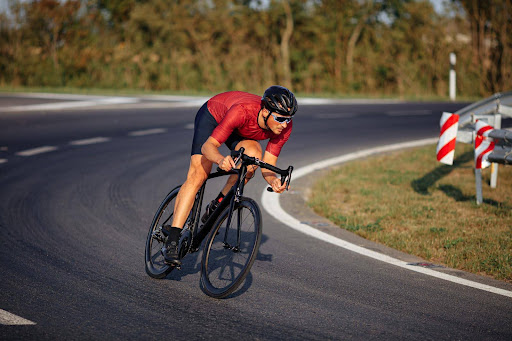Hey there, fellow bike enthusiasts! Today, we’re pedalling down memory lane to explore the fascinating evolution of cycling fashion. From the early days of penny-farthings to today’s aerodynamic wonders, let’s see how our beloved sport has shaped what we wear on two wheels. Grab your helmet and join me on this stylish ride through history!
The Victorian Era – Practicality Meets Propriety
Picture this: it’s the late 1800s, and cyclists are navigating cobblestone streets in full Victorian attire. Men sported wool suits and caps, while women wore long skirts and corsets. Not exactly what we’d call performance wear today, right? These outfits were a far cry from the sleek lycra we’re used to, but they reflected the societal norms of the time. Imagine trying to pedal a penny-farthing in a three-piece suit! Despite the impracticality, these early cyclists paved the way for the sport we love today, all while maintaining the decorum expected in Victorian society.
Early 20th Century – The Birth of Sportswear
As cycling gained popularity, fashion began to adapt. Knickerbockers (those funny knee-length pants) became all the rage for men, offering more freedom of movement. Women started to rebel against restrictive clothing, opting for shorter skirts or even – gasp! – trousers. This era marked a significant shift in cycling fashion, as clothing began to be designed with the sport in mind. The introduction of more practical attire allowed cyclists to ride longer distances and compete more effectively. It was during this time that we started to see the seeds of modern cycling wear being sown, with comfort and functionality slowly taking precedence over strict adherence to social norms.
Mid-20th Century – Function Over Fashion
Post-World War II, cycling clothing took a turn towards the practical. Synthetic materials made their debut, and the iconic wool jersey became a staple. This era saw the birth of padded shorts – a game-changer for our behinds! The introduction of these new materials and designs was revolutionary for the sport. Cyclists could now ride faster and longer, with clothing that wicked away sweat and reduced chafing. The famous yellow jersey of the Tour de France, introduced in 1919, became a symbol of cycling excellence during this period. This era laid the groundwork for the high-performance gear we see in professional cycling today.
The 80s and 90s – Loud and Proud
If you lived through this era, you probably remember the explosion of neon colours and wild patterns. Lycra became the material of choice, and cycling fashion wasn’t afraid to make a statement. Some might say it was shouting! This period was all about visibility and self-expression.
Team jerseys became moving billboards, covered in sponsor logos and eye-catching designs. The advent of sublimation printing allowed for more complex and colourful patterns than ever before. While some may look back on this era with a cringe, it was a time of innovation and pushing boundaries in cycling fashion. The bold styles of this period continue to influence retro and vintage-inspired cycling wear today.
Today – High-Tech Performance Meets Style
Now, we’re in the golden age of cycling fashion. Advanced materials wick sweat, reduce drag, and even protect us from UV rays. But it’s not all about performance – style plays a huge role too. From urban commuters in casual, bike-friendly clothes to pro cyclists in sleek, sponsor-laden kits, there’s something for every rider. Modern cycling wear is a perfect blend of form and function.
We have jerseys with built-in SPF, bibs with strategically placed compression panels, and shoes so light you might forget you’re wearing them. Brands are also focusing on sustainability, using recycled materials and eco-friendly production methods. And let’s not forget about the tech integration – from heart rate monitors woven into base layers to smart helmets with built-in communication systems.
The Future – What’s Next?
As we look ahead, who knows what cycling fashion will bring? Smart fabrics that adjust to our body temperature? Helmets with built-in AR displays? The possibilities are as endless as an open road on a sunny day. We might see clothing that can harvest energy from our movements to power our devices, or fabrics that can change colour on demand to match our mood or the weather. Perhaps we’ll have gear that can self-repair after a crash, or shoes that automatically adjust their stiffness based on the terrain. One thing’s for sure – the intersection of technology and fashion in cycling will continue to evolve, making our rides safer, more comfortable, and more stylish than ever before.
Conclusion
So, next time you suit up for a ride, take a moment to appreciate how far cycling fashion has come. From restrictive Victorian garb to today’s high-tech gear, it’s been quite a journey. Each era has contributed to the comfort, performance, and style we enjoy today. Who knows? The kit you’re wearing now might be considered a vintage classic in a few decades!
Until next time, keep those pedals turning and stay stylish out there! Remember, whether you’re rocking the latest aero gear or sporting a well-loved jersey from years past, the most important thing is that you’re out there riding. After all, the best cycling outfit is the one that gets you on your bike!
Written by Niall O’Riordan UBS
